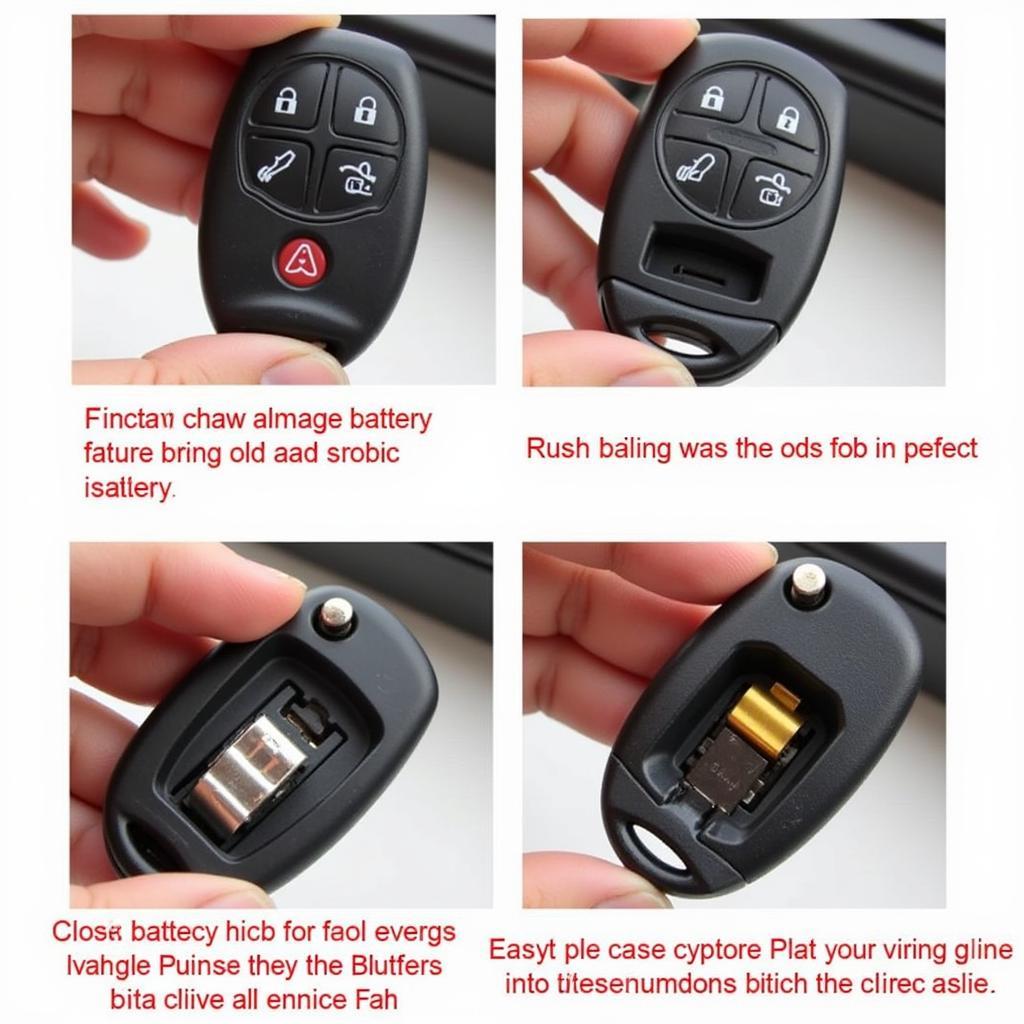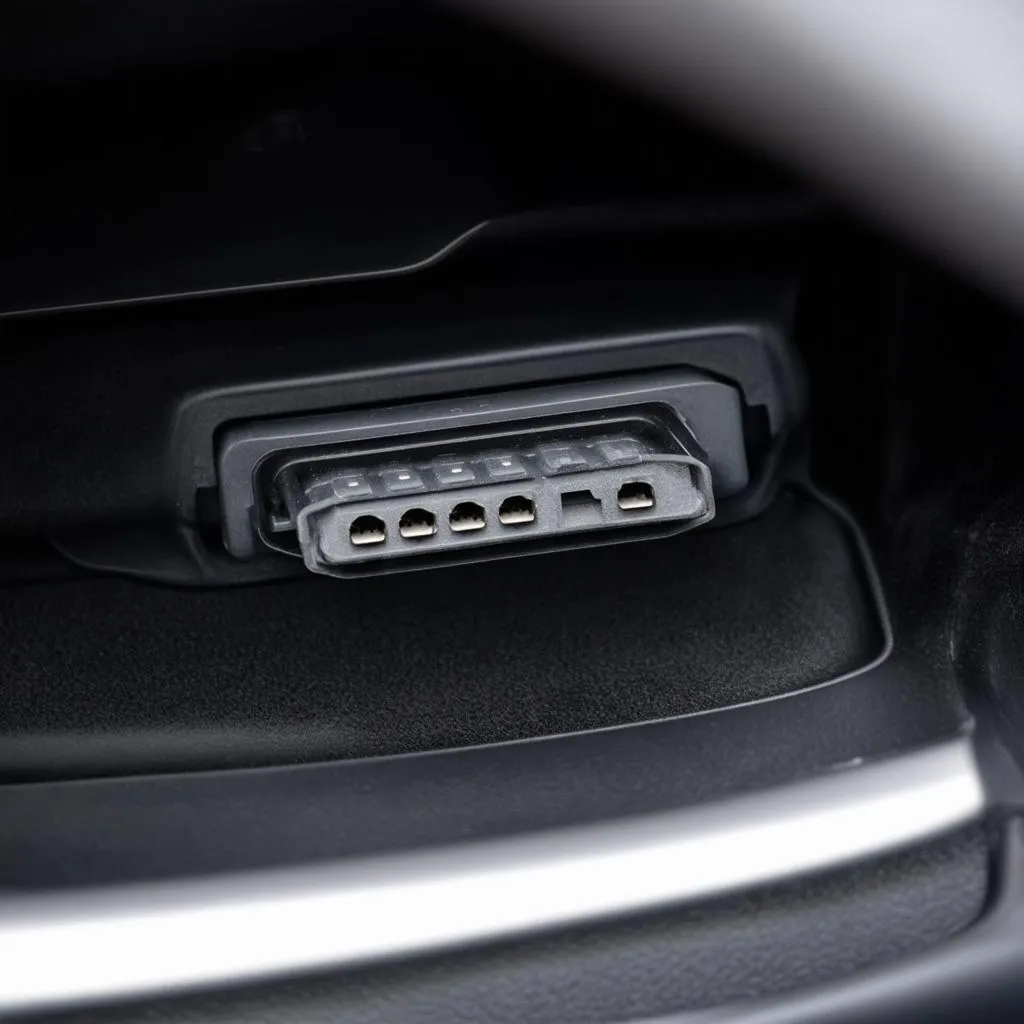Owning a 2003 Mercedes E500 is owning a piece of automotive history. However, like all machines, even the most luxurious vehicles require maintenance and occasional repairs. Understanding how to diagnose issues with your E500 can save you time and money in the long run. This article will guide you through the intricacies of 2003 Mercedes E500 diagnostics, providing valuable information for both DIY enthusiasts and those who prefer professional help.
Understanding the On-Board Diagnostics System
Before delving into specific issues, it’s crucial to understand the foundation of modern car diagnostics: the OBD-II system.
Since 1996, all cars sold in the US, including your 2003 E500, come equipped with an OBD-II port. This port, usually located under the driver’s side dashboard, acts as the gateway to your car’s computer system, storing valuable data about your engine’s performance.
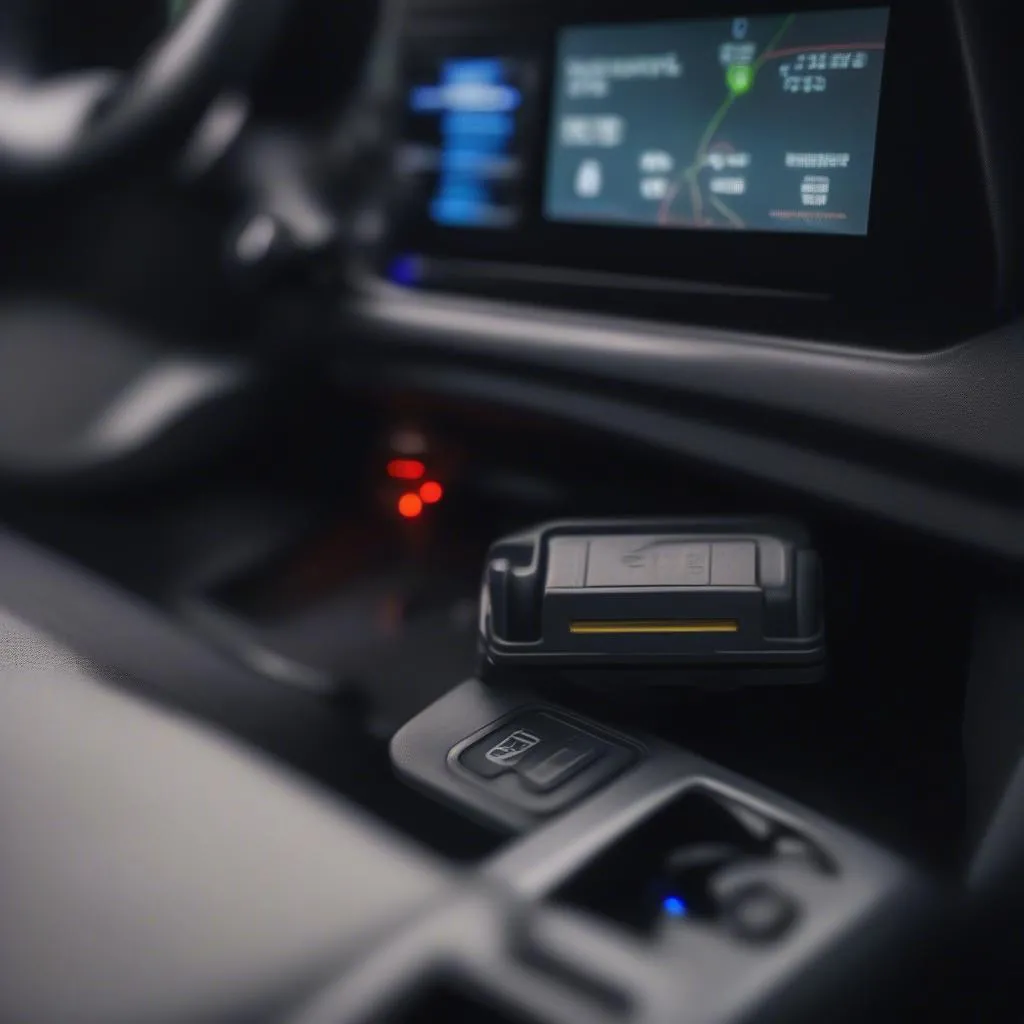 OBD2 Port Location
OBD2 Port Location
Common Issues and Diagnostic Codes
When your E500’s “Check Engine” light illuminates, it’s a clear sign that something isn’t right. The OBD-II system generates specific diagnostic trouble codes (DTCs) that pinpoint the source of the problem. Here are some frequently encountered issues in the 2003 E500:
- Oxygen Sensor Malfunction (P0130-P0167): A faulty oxygen sensor can negatively impact fuel economy and emissions.
- Mass Air Flow (MAF) Sensor Problems (P0171, P0174): The MAF sensor measures the air entering the engine. A malfunctioning sensor can lead to rough idling, poor acceleration, and increased fuel consumption.
- Catalytic Converter Issues (P0420, P0430): A failing catalytic converter can trigger these codes, often accompanied by a noticeable decrease in engine performance.
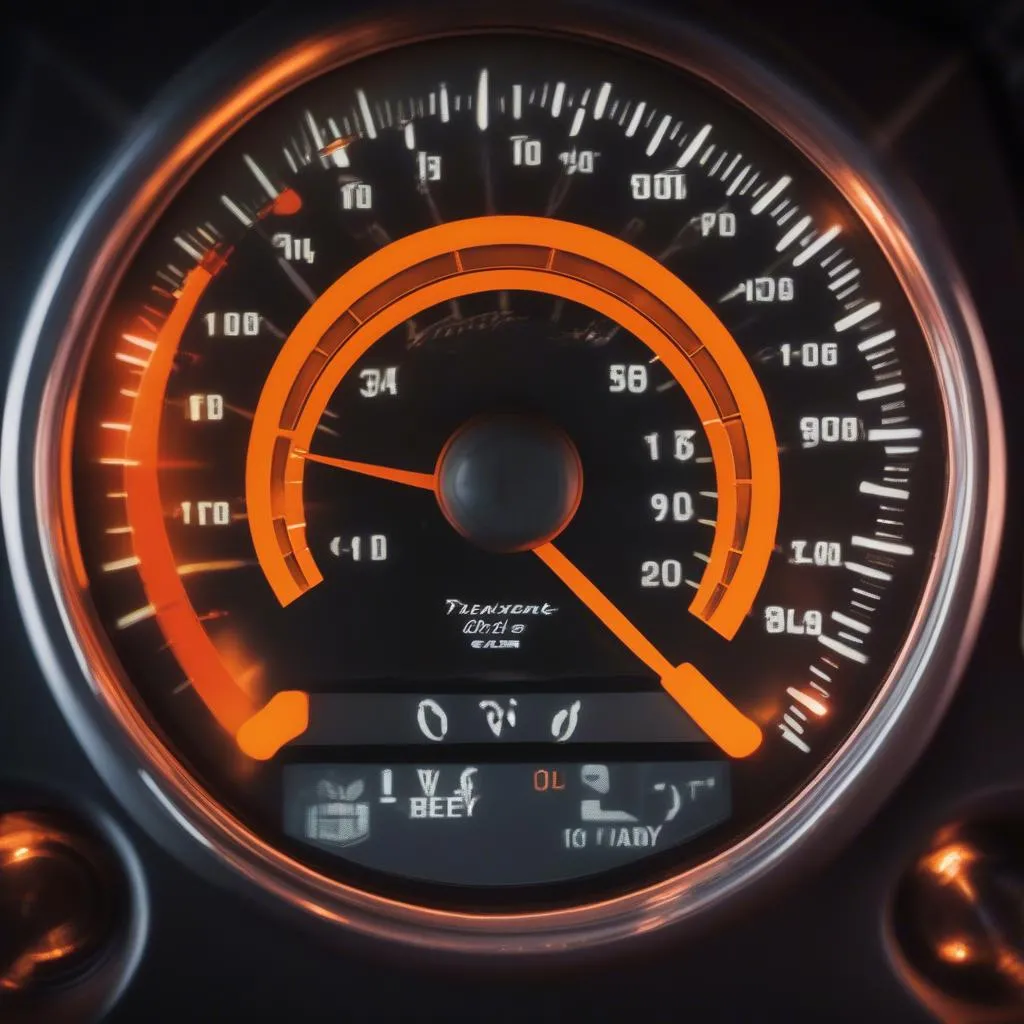 Check Engine Light
Check Engine Light
“It’s vital to remember that DTCs provide a starting point for diagnosis, not a definitive answer,” says automotive electronics expert Dr. Emily Carter. “Further investigation is always necessary to confirm the root cause.”
Diagnostic Tools for the 2003 E500
Several diagnostic tools can help you decode your E500’s cryptic trouble codes:
- Basic OBD-II Scanners: These affordable scanners read and display DTCs, providing a general idea of the problem.
- Advanced Scan Tools: Professional-grade tools, like those used in dealerships, offer more in-depth data, such as live sensor readings and the ability to access manufacturer-specific codes.
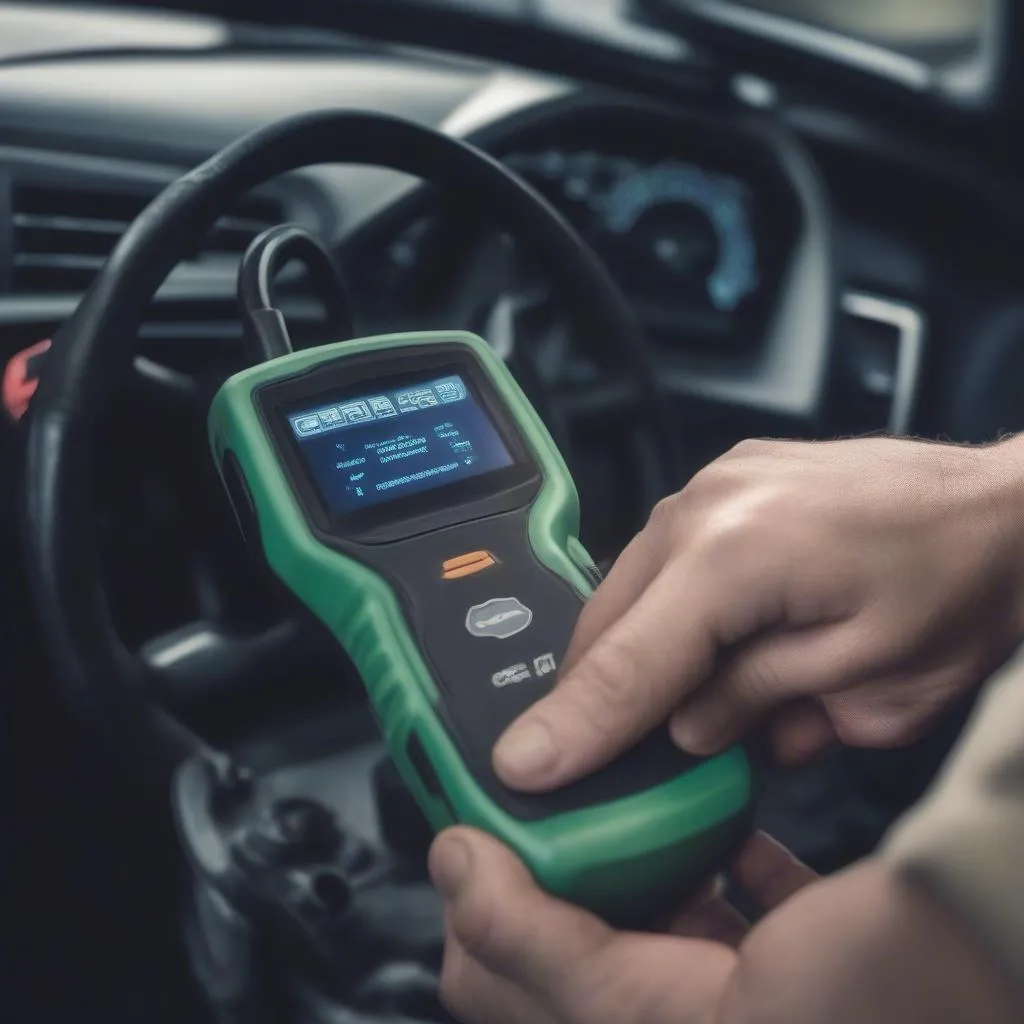 Using OBD2 Scanner
Using OBD2 Scanner

